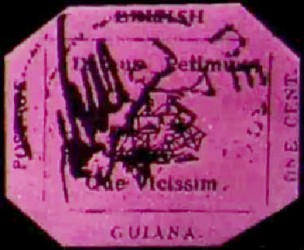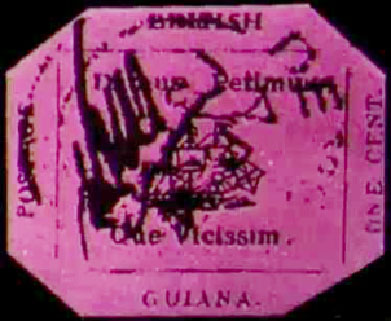WASHINGTON, (Reuters) – The world’s rarest postal stamp, the 1856 British Guiana One-Cent Magenta, will go on display at the National Postal Museum in Washington starting in April, the Smithsonian Institution said yesterday.
The stamp will be displayed in the museum’s William H. Gross Gallery for three years, the longest and most publicly accessible showing it has ever had, the Smithsonian said in a statement.
The stamp is the only surviving example of the British Guiana One-Cent Magenta.
Printed in black ink on magenta paper, it bears the image of a three-masted ship and the colony’s motto in Latin: “We give and expect in return.”
 The one-cent stamp was sold by Sotheby’s in June for $9.5 million, four times the price ever paid for a single stamp. Sotheby’s said the postage stamp was the most valuable object by weight and size.
The one-cent stamp was sold by Sotheby’s in June for $9.5 million, four times the price ever paid for a single stamp. Sotheby’s said the postage stamp was the most valuable object by weight and size.
The anonymous buyer is lending it to National Postal Museum.
The British Guiana One-Cent Magenta is among the first postage stamps. The postmaster in British Guiana, now the republic of Guyana, asked a newspaper in 1856 to print stamps after supplies from Britain were delayed.
A schoolboy in British Guiana discovered the stamp in 1873 among his family papers. It passed through various collectors until it was bought by John du Pont, an heir to the du Pont chemical fortune.
Du Pont’s estate sold the stamp at the Sotheby’s auction. Du Pont died in prison in 2010 while serving a murder sentence for shooting wrestler David Schultz in 1996.





